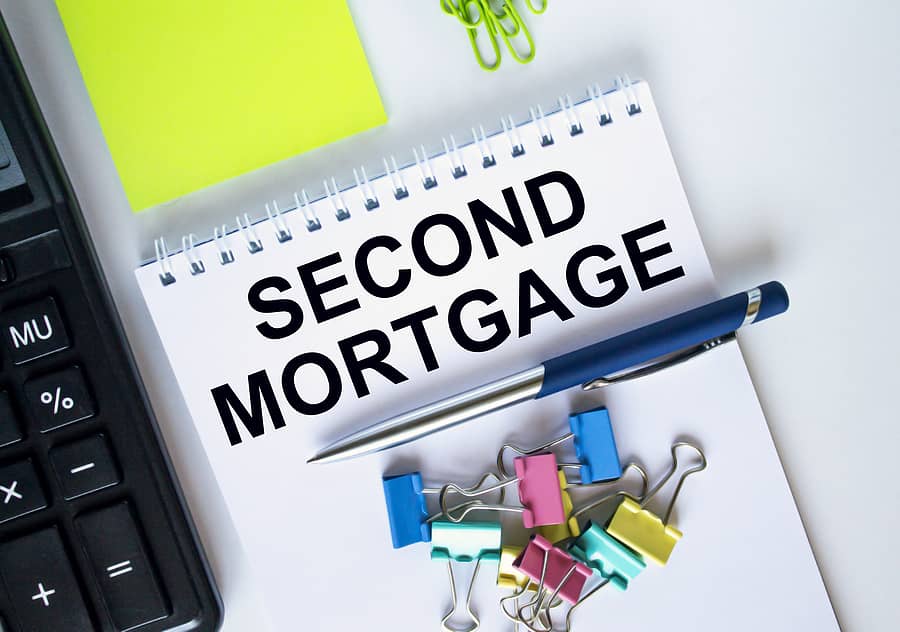Despite a persistent pandemic, housing values across Canada have been rising over the past few months, especially in Toronto and the GTA.
A recent report from the Toronto Regional Real Estate Board (TRREB) found that the average selling price for any style of residential home was up 13 percent from the same time last year. The report says rebounding work sectors, low borrowing rates and competition between homebuyers have kept home prices up in the GTA.
Jason Mercer, a senior analyst for TRREB says that we can “Expect record or near-record home sales for the remainder of 2020.” With home values increasing, homeowners have more equity available for a loan or a second mortgage.
A second mortgage can be used for any purpose including debt consolidation, buying a home, renovations or financing other investments.
What is a Second Mortgage?
A second mortgage is a loan against a property that already has a mortgage on it. Just like a mortgage or loan, you are expected to repay the second mortgage with interest. If you do not make the required payments, the lender can sell your home to get their money back. If you default on your payments and your home is sold by either lender, your first mortgage lender will get repaid first, and your second mortgage lender is repaid next. Second mortgage lenders must manage more risk because they aren’t paid first during a sale of a property, so they charge higher lending fees and interest rates.
Second Mortgage Borrowing Options
When applying for a second mortgage there are different lending options available, depending on what you can qualify for.
Home Equity Line of Credit (HELOC)
A HELOC is a form of a second mortgage which allows you to withdraw money as you need it. With a HELOC, you do not need to take out the full amount of the mortgage at once, but there is a limit to how much you can withdraw as defined in the loan agreement.
With a HELOC, you can borrow up to 65 percent of your home equity.
You can take out money as many times as you want each month as long as you don’t surpass your borrowing limit. Most HELOCs come with variable interest rates, meaning that the interest rate can change each month depending on fluctuations in the lending market.
A benefit of a HELOC is that you are only required to make interest payments on the amount that you have withdrawn from your HELOC loan. In many HELOC agreements, repayment of the principal is optional until the loan agreement ends. This arrangement can help ease the burden of monthly payments.
Banks offer HELOCs to borrowers with a good credit score, steady income and enough home equity.
Second Mortgages
A second mortgage is often available to borrowers who don’t qualify for a HELOC, and is a loan based on the amount of equity the borrower has in their home.
A second mortgage functions much like your first mortgage, but with higher interest rates and fees.
Typically, private lenders are the most common providers of second mortgages, but Trust Companies and Credit Unions can offer them as well.
How to Qualify for a Second Mortgage in the GTA
Equity is the value of your property that you completely own. How much equity you need to qualify for a second mortgage depends on the location of your property.
Homeowners living in urban areas need more than 20 percent equity.
Homeowners in rural areas must have more than 35 percent home equity to secure a second mortgage.
Private lenders approve a second mortgage based exclusively on home equity.
Credit Score
You will need a credit score of at least 550 to get a second mortgage from a bank, Trust Company or Credit Union.
Banks will generally not provide a second mortgage unless you already have a first mortgage with them. If they do approve of a second mortgage, this will often be in the form of a HELOC.
Private lenders do not need to know your credit score to approve loans but will check it to confirm the status of any other debts you may have and if you paid them off.
Mortgage Tools and Calculators
Getting a second mortgage is a big decision. Make you have enough information before you decide to borrow.
You should be aware of the impact of a second mortgage on your finances, especially in regards to payments on your first mortgage and your ability to save for any unexpected financial challenges like medical bills or loss of income. With a recent spike in COVID-19 cases leading many Ontarians into another lockdown, many homeowners will have to manage mortgage payments with reduced income. With tools like the loan-to-value ratio calculator or the mortgage payment calculator you can find out what kind of second mortgage you qualify for and the monthly costs that will come with it.



